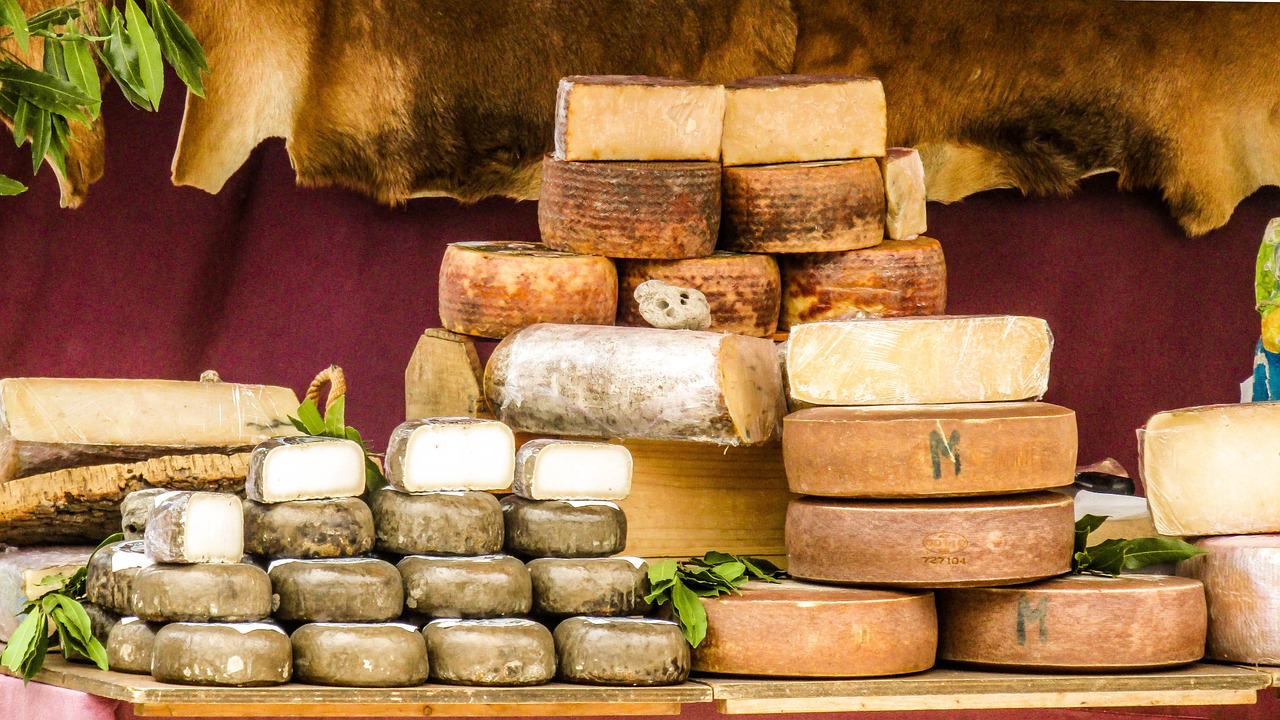Spain Video
Indulging in Local Cuisine without Breaking the Bank in Spain
Spain is renowned for its rich culinary heritage and diverse regional cuisines. From tapas to paella, the country offers a plethora of mouthwatering dishes that showcase the flavors and traditions of each region. While dining out in Spain can sometimes be expensive, there are plenty of ways to indulge in local cuisine without breaking the bank. Whether you’re a budget traveler or simply looking to save some money while exploring Spain, this guide will provide you with tips and recommendations to enjoy delicious food without emptying your wallet.
1. Explore Local Markets
One of the best ways to experience the local cuisine in Spain is by visiting the bustling markets found in almost every city and town. These markets are not only a feast for the senses but also offer a wide variety of fresh produce, meats, cheeses, and other local products at affordable prices. Take a stroll through the market and soak in the vibrant atmosphere while sampling some of the local specialties. From Mercado de San Miguel in Madrid to Mercat de Sant Josep de la Boqueria in Barcelona, there are numerous markets to explore throughout the country.
- Fresh Produce: Spain is known for its high-quality fruits and vegetables. Explore the market stalls to find a wide variety of seasonal produce such as oranges, tomatoes, avocados, and more.
- Local Cheeses and Meats: Sample the delicious assortment of regional cheeses and cured meats available at the market. From Manchego cheese to Jamón Ibérico, there’s something to suit every palate.
- Seafood: Spain’s coastal regions offer an abundance of fresh seafood. Look out for stalls selling fresh fish, prawns, and other delicacies straight from the sea.
- Bakery Delights: Don’t forget to indulge in some freshly baked bread, pastries, and sweets from the local bakeries found within the markets.
2. Tapas Crawls
Tapas, small plates of delicious food, are a quintessential part of Spanish cuisine. Instead of dining at a traditional sit-down restaurant, consider going on a tapas crawl to sample a variety of dishes at different establishments. Many cities in Spain, such as Seville, Granada, and Barcelona, have vibrant tapas scenes where you can hop from one bar to another, enjoying a drink and a tapa at each stop. Not only is this a fun and social way to eat, but it also allows you to try different flavors and specialties without spending a fortune.
- Classic Tapas: Don’t miss out on the classic tapas dishes like patatas bravas (fried potatoes with spicy sauce), tortilla española (Spanish omelet), and croquetas (breaded and fried croquettes filled with various ingredients).
- Regional Specialties: Each region in Spain has its own unique tapas specialties. In Andalusia, try the gazpacho (cold tomato soup) or salmorejo (thicker version of gazpacho). In Catalonia, sample the pan con tomate (bread with tomato) or escalivada (roasted vegetables).
- Ask for Recommendations: Don’t be afraid to ask the locals for their favorite tapas bars or dishes. They will be more than happy to share their insider tips and guide you to the best spots in town.
3. Menú del Día
Another great way to enjoy local cuisine without breaking the bank is by opting for the Menú del Día (menu of the day) offered at many restaurants across Spain. Typically available during lunchtime, the Menú del Día consists of a fixed-price menu that includes a starter, main course, dessert, bread, and a drink. This is a popular choice for locals and tourists alike, as it offers a complete meal at an affordable price.
- Value for Money: The Menú del Día provides excellent value for money, often costing significantly less than ordering individual dishes from the à la carte menu.
- Traditional Favorites: The menu usually features traditional Spanish dishes such as paella, cocido (hearty stew), or arroz con pollo (rice with chicken).
- Variety of Options: Many restaurants offer a choice of several starters, main courses, and desserts, allowing you to customize your meal according to your preferences.
- Local Restaurants: Look for small, family-run restaurants or neighborhood eateries that cater to locals. These establishments often offer authentic, home-cooked meals at affordable prices.
4. Seek Out Local Eateries
When dining out in Spain, try to avoid touristy restaurants located in crowded areas or near major attractions. Instead, venture into the local neighborhoods and seek out small, family-owned eateries that cater to the locals. These hidden gems often offer delicious food at reasonable prices, as they focus on quality and authenticity rather than catering to tourist demands.
- Menu del Día: Many local eateries offer the Menú del Día mentioned earlier, providing an excellent opportunity to savor traditional dishes at affordable prices.
- Authentic Flavors: By dining at local establishments, you’ll have a better chance of experiencing the authentic flavors and culinary traditions of the region you’re visiting.
- Local Recommendations: Ask locals or hotel staff for recommendations on where to find the best local eateries. They will often point you in the right direction, ensuring you have a memorable dining experience.
Spain Image 1:

5. Take Advantage of Lunchtime Menus
In Spain, lunch is considered the main meal of the day, and many restaurants offer special lunchtime menus at discounted prices. Take advantage of these menus to enjoy a hearty meal without breaking the bank.
- Fixed-Price Menus: Similar to the Menú del Día, lunchtime menus often include several courses at a fixed price, making them an affordable option for a satisfying meal.
- Extended Lunch Hours: Keep in mind that lunchtime in Spain is typically between 1:30 pm and 3:30 pm, so plan your day accordingly to make the most of these discounted menus.
- Traditional Dishes: Lunchtime menus often feature traditional Spanish dishes, allowing you to explore the local cuisine and indulge in regional specialties.
6. Street Food Delights
Another wallet-friendly option for indulging in local cuisine in Spain is to try the various street food offerings available throughout the country. From food trucks to market stalls, street food vendors serve up delicious and affordable snacks that are perfect for a quick bite.
- Churros con Chocolate: A classic Spanish street food, churros are deep-fried dough pastries served with a thick, rich hot chocolate for dipping.
- Bocadillos: These Spanish-style sandwiches are made with fresh bread and filled with a variety of ingredients such as cured meats, cheese, and vegetables.
- Pintxos: Popular in the Basque Country, pintxos are small bites served on a skewer. They often feature a combination of flavors and textures, making them a delight for food lovers.
- Empanadas: These savory turnovers filled with meat, vegetables, or cheese are a popular street food snack in Spain.
Spain Image 2:

7. Share Plates
When dining out in Spain, it’s common to share plates among friends and family. Embrace this communal dining style and order a variety of dishes to share with your dining companions. Not only will you get to taste a wider range of flavors, but you’ll also save money by splitting the bill.
- Raciones: Raciones are larger portions of dishes that are meant to be shared. They are often more cost-effective than ordering individual portions.
- Tapas Sharing: If you’re going on a tapas crawl, order a variety of tapas dishes and share them with your group. This way, everyone gets to try different flavors and specialties.
- Family-Style Dining: Some restaurants offer family-style dining options where you can order a selection of dishes to share among your group.
8. Avoid Tourist Traps
When exploring Spain, it’s important to be aware of tourist traps, especially in popular tourist destinations. These establishments often charge higher prices and may compromise on quality. To avoid falling into tourist traps:
- Research and Plan: Before your trip, research recommended restaurants and local favorites in the area you’ll be visiting. This way, you’ll have a list of reliable options to choose from.
- Read Reviews: Check online reviews and recommendations from fellow travelers to get an idea of the quality and value offered by different restaurants.
- Step Away from Major Attractions: Tourist traps are often located near major attractions. Explore the surrounding neighborhoods to find authentic and reasonably priced eateries.
9. Menu Boards and Daily Specials
When walking around Spanish cities and towns, pay attention to the menu boards displayed outside restaurants. These boards often showcase the daily specials and fixed-price menus, giving you an idea of what’s on offer and at what price.
- Special Offers: Many restaurants offer daily specials or discounted menus for specific days of the week. Take advantage of these offers to enjoy a delicious meal at a lower price.
- Seasonal Delights: The menu boards also highlight seasonal dishes and ingredients, allowing you to try the freshest and most flavorful options available.
- Ask for Clarification: If you’re unsure about any of the items listed on the menu boards, don’t hesitate to ask the staff for more information. They will be happy to explain the dishes and make recommendations.
Spain Image 3:

10. Takeaway and Picnics
If you’re looking to save even more money, consider getting takeaway food or having a picnic in one of Spain’s beautiful parks or beaches. Many restaurants offer takeaway options, allowing you to enjoy your meal in a scenic outdoor setting.
- Takeaway Paella: Paella is a popular Spanish dish that is often available for takeaway. Find a local restaurant or specialty shop that offers this traditional rice dish and enjoy it alfresco.
- Bocadillos to Go: Grab some bocadillos from a local deli or bakery and head to a nearby park for a picnic. This is a budget-friendly way to enjoy a delicious meal while taking in the surroundings.
- Local Delicacies: Explore the local markets for regional delicacies that can be enjoyed on the go. From Iberian ham to local cheeses, you’ll find plenty of options to create a picnic feast.
11. Daily Market Discounts
Keep an eye out for daily market discounts, especially towards the end of the day when vendors may offer reduced prices on their remaining produce. This is a great opportunity to stock up on fresh fruits, vegetables, and other local products at bargain prices.
- Timing is Key: Visit the markets in the late afternoon or early evening to take advantage of the discounted prices. Vendors will be more willing to negotiate and offer deals to clear their remaining stock.
- Bulk Purchases: If you’re traveling with a group or planning to cook your own meals, buying in bulk can save you even more money. Split the cost among your group and enjoy fresh ingredients throughout your stay.
- Support Local Farmers: By purchasing from local markets, you’re supporting small-scale farmers and producers while enjoying the freshest ingredients available.
12. Cooking Classes
If you’re truly passionate about Spanish cuisine and want to immerse yourself in the local culinary traditions, consider taking a cooking class. Cooking classes not only provide hands-on experience in preparing traditional dishes but also offer insights into the local ingredients and cooking techniques.
- Market Visits: Many cooking classes include a visit to the local market, where you’ll learn how to select the best ingredients for your dishes.
- Learn from the Experts: Experienced chefs will guide you through the cooking process, sharing their knowledge and tips along the way.
- Tasting Sessions: After the class, you’ll have the opportunity to savor the dishes you’ve prepared, gaining a deeper appreciation for the flavors and techniques used in Spanish cuisine.
By following these tips and recommendations, you can indulge in the delicious local cuisine of Spain without breaking the bank. From exploring markets and going on tapas crawls to seeking out local eateries and taking advantage of lunchtime menus, there are plenty of budget-friendly options to satisfy your taste buds. So, get ready to embark on a culinary adventure and discover the flavors of Spain while keeping your wallet happy!
References:
- lonelyplanet.com
- spain.info
- theculturetrip.com
- foodandwine.com
- tripsavvy.com


